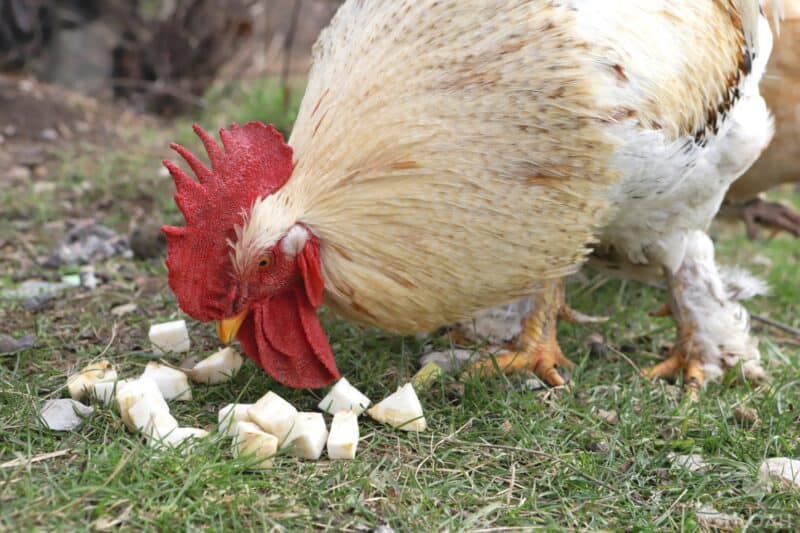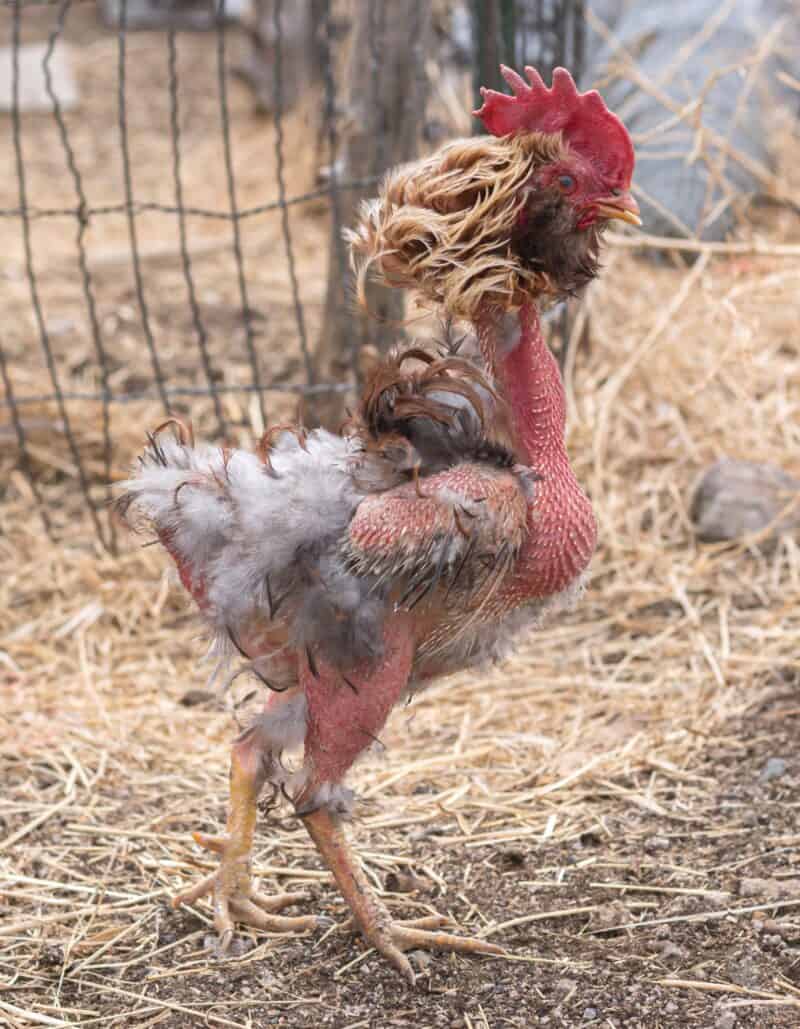[ad_1]
If you want chickens, and tell someone that you want to add a rooster to your flock, they might give you a funny look. If it’s because they also own chickens they might be worried about your sanity. If it’s your neighbor, they are doubtless worried about the noise your new addition is going to make.

But whatever other folks might think about them roosters do play an important part in the overall well-being of a flock and your operation. So naturally, the most important question is the first one how much does a rooster cost?
A rooster will run you anywhere from $5 to $2,000 or even more, though the vast majority will sell for less than $100. The age, pedigree, and breed of a rooster all contribute to its cost, as well as any accolades or special attributes that the bird might have.
From that roosters are very much like any other animal out there when it comes to cost. You have to look at things like rarity of the breed, popularity, market factors, pedigree, championship status, if it was a show animal, and on and on and on.
The good news is that if you want a rooster and don’t care about all the fancy flashy stuff, you can get one for just a few bucks. But if you’re a true connoisseur of roosters or have exacting tastes when it comes to expanding your flock, you better get your checkbook ready. Keep reading, and we’ll get right into it…
How Much Do Rooster Eggs Cost?
On average, rooster eggs will go for anywhere from $5 to $20 depending on the breed. And, as always, the hatchery or individual seller might charge a premium depending on their expertise, the lineage of their sires and relatives, and many other factors.
How Much Do Rooster Chicks Cost?
A rooster chick will usually run you a little bit more than an egg, on average about $7 or $8 and potentially as much as $25 to $50 again depending on the breed, various market factors, and the seller.
However, it isn’t out of the question that you might be able to get a rooster chick for free if somebody doesn’t want one and the chicks are autosexing or have been sexed manually.
How Much is a Full-Grown Rooster Worth?
A full-grown rooster can run anywhere from $25 to $150 or a whole lot more, potentially upwards of $2,000.
Don’t let this dissuade you, because this huge range is only even possible because of extraordinary outliers.
Much of the time, an adult chicken will sell for more than a chick because the seller has more invested in them up to that point in their life. Food, water, medicine, electricity for heat, checkups, etc.
All of the usual factors apply here, including breed, rarity, color, unusual features, lineage, and so forth.
Where you get into truly huge costs is in the case of rare adult specimens from rare breeds that are either from champion stock or are themselves champions.
If you fancy a rooster that has the blood of a winner and is likely to produce more winners, you’re going to have to pay an awful lot for the privilege.
The Most Valuable Roosters
The most expensive roosters on Earth, bar none, are Ayam Cemanis. These ominous-looking chickens are jet black. And I don’t mean black feathers: I mean they are entirely, stem to stern, top to bottom, inside and out black.
Their combs are black, their beaks are black, and their waddles, earlobes, eyes, and tongues are black. Their feathers look like spilled ink. Their skin and scales are the color of pitch. Their muscles, their very organs and even their bones are entirely black!
Why are they like this? No one is really sure, but they’ve been this way very, very long time and it’s thought to have occurred back when chickens were still wild animals in the jungles of Asia.
As you might imagine, they are quite rare in the United States and command an extraordinary premium.
Do Roosters Get Sold as Chicken?
Yes, they do. Young roosters are often slaughtered to make large and impressive roasters, or else they are caponized, basically neutered, to produce large but tender chicken that’s somewhat sweeter than what you would usually get from a typical rooster.
It turns out that living under the influence of testosterone often makes muscles very dense and a bit tangy in flavor.
A rooster might or might not command a greater premium on the market just because it’s a rooster, but you’ll definitely pay for it when it comes to weight. Remember that roosters are, as a rule, bigger and heavier than hens.
Factors That Affect the Price of Roosters
As mentioned throughout this article, there are lots of factors that can affect the price of a rooster.
Age obviously, is a big one. Eggs cost less than chicks, and chicks typically cost less than adults although not always. More on that in a minute.
Another big one is the breed. Some of the most common breeds in a country or region will sell for a lot less than ones that are rare, or very rare around the world.
Rhode Island Reds, Jersey Giants, Leghorns, and other “garden variety” birds are a dime a dozen in the United States, but the aforementioned Ayam Cemani, French Houdan, and other distinguished heritage or rare breeds will demand a lot more at any stage of growth.
Likewise, roosters that have rare plumage colors or patterns, or ones that have been developed as designer birds, can command a significant premium. Similarly, unique features like frizzling, tufts, crests, long tail feathers, and so forth might also jack up the price.

And, of course, there’s the aforementioned issue of championship lineage or proven, thorough breeding. Specialty hatcheries that have taken exquisite care of their birds and spared no expense when mating and raising them will always charge more for their animals.
If you’re buying an adult rooster that has been proven to win, place, or show in competitions you’re going to pay more for it certainly. And then there’re other intangible factors, too…
If someone has a rooster and is sick of it, they might just give it away for free. Likewise, a rooster that still has useful years of guarding and fighting left in it but is no longer good for mating could go for less, even if it is otherwise extraordinary.
Basically, roosters are affected by many of the same market factors that all other livestock animals and pets are.
How Much Do Fighting Roosters Cost?
Fighting roosters constitute a category of breeds, often called gamecocks or gamefowl. Just because cock fighting is banned in many countries, and in all Western ones at large, these breeds are still around today and not necessarily sold only for fighting.
They are interesting historical footnotes, many of them are gorgeous birds in their own right and most of them are intelligent, inquisitive, and even playful outside of their bloodthirsty original purpose.
Breeds like the Asil, Malay, Old English Game, Modern Game, and Sumatra are more or less available depending on where you are in the world or regionally, and can be expected to go for about the same price that most other roosters are, or command small to modest premiums depending on rarity and lineage.
Expect to spend anywhere from $5 to $200 to lay claim to a fighting rooster of your own.
Prize Rooster Prices
Prize roosters are worth whatever someone is willing to pay for them. Championship status, or consistently placing in various shows for the breed standard, does convey a certain amount of premium to the typical prices.
As mentioned previously, a particularly rare, beautiful, and fertile rooster that has won one or more championships could easily sell for over $1,000.
Do You Ever See Full-grown Roosters for Sale?
Yes, you do! In fact, you tend to see them all the time, usually from sellers who wanted a rooster and didn’t know what they were getting in for, or those who bought a big batch of straight-run eggs and are trying to recoup a little bit of money while rehoming an unneeded male.
And, much of the time, you won’t even see them really for sale: more often they are free to a good home or to anyone who wants a chicken dinner!
How to Pick a Good Rooster
Picking a good rooster is mostly a manner of finding a good and trusted breeder and then carefully inspecting a chick that has been sexed as male one way or the other.
So long as the chick looks healthy and is meeting growth and behavior benchmarks for its age post-hatching, you can usually be assured of ending up with a healthy, happy rooster.
If you’re buying an adult bird, try to get some confirmation of how old it is. Chickens don’t show signs of aging quite as readily as other animals, and it wouldn’t do to pay top dollar for a rooster that has its best years long behind it.
Also, observe the rooster if you can when it’s moving around. Look for signs of old injuries, missing feathers, a limp, reluctance to stand or walk, things like that.
[ad_2]
Source link
Get more stuff like this
in your inbox
Don't Be Left Unprepared
Thank you for subscribing.
Something went wrong.





